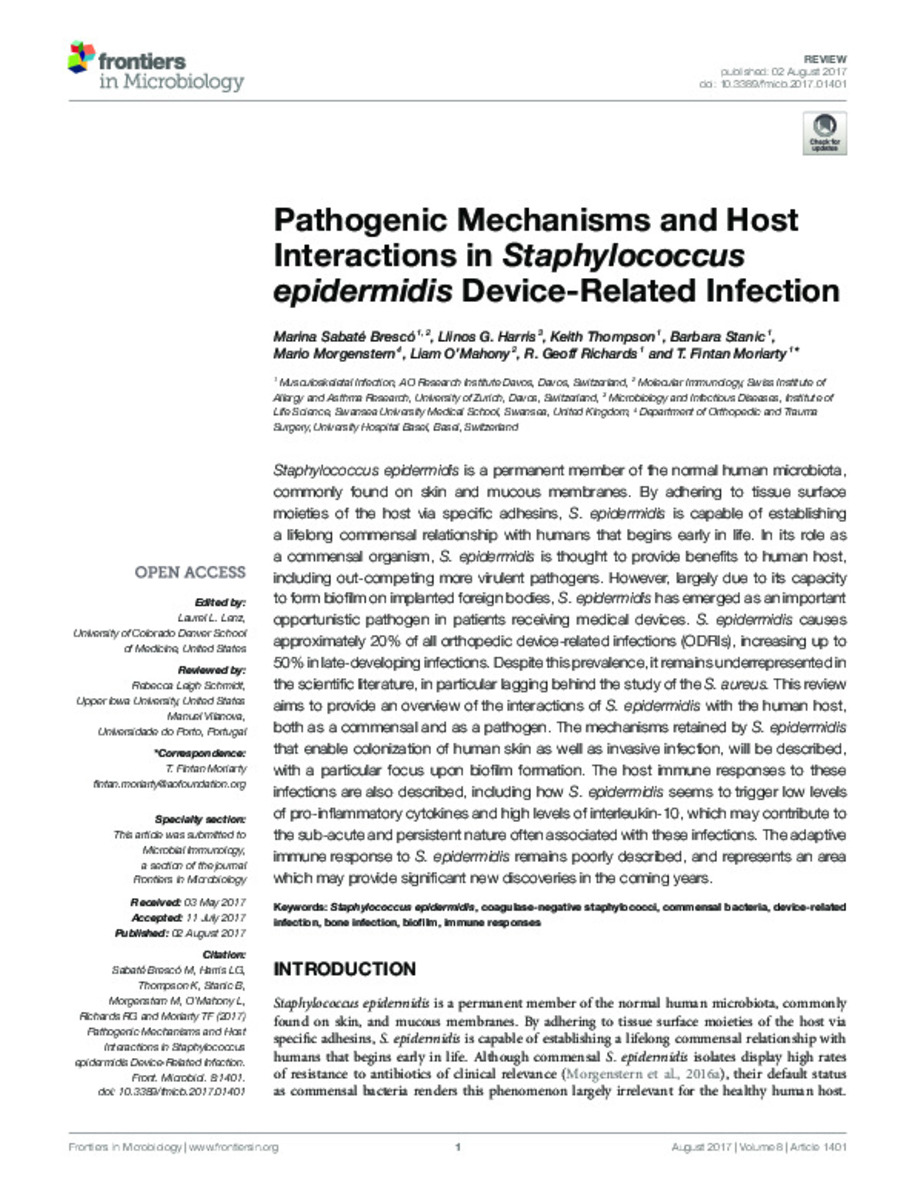Pathogenic Mechanisms and Host Interactions in Staphylococcus epidermidis Device-Related Infection
Keywords:
Staphylococcus epidermidis
Human microbiota
Virulent pathogens
Orthopedic device-related infections (ODRIs)
Pro-inflammatory cytokines
Editorial note:
© 2024 Frontiers Media S.A.
Citation:
Sabaté-Brescó, M. (Marina); Harris, L. G. (Llinos G.); Thompson, K. (Keith); et al. "Pathogenic Mechanisms and Host Interactions in Staphylococcus epidermidis Device-Related Infection". Frontiers in Microbiology. 8 (1401), 2017, 1 - 24
Statistics and impact
0 citas en

0 citas en

Items in Dadun are protected by copyright, with all rights reserved, unless otherwise indicated.







